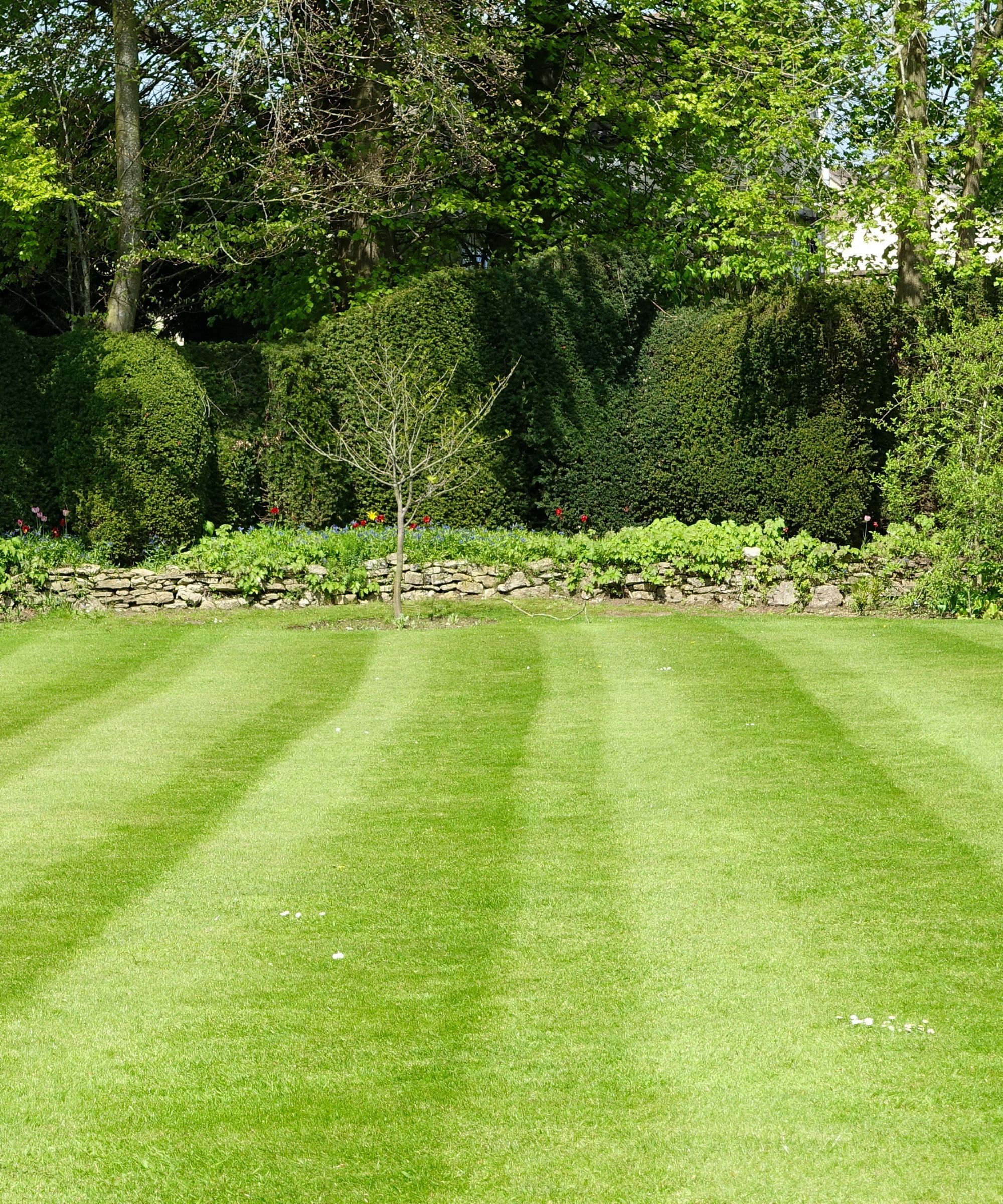
Just as minimalism has a place in some of the most beautifully designed homes, this modern aesthetic has a place beyond our four walls – and nobody makes a case for it quite like Adele. The London-born turned Los Angeles resident offered a look at her white-painted, Tuscan-style property, which is inevitably impressive in its own right. However, when it comes to her landscaping design, her yard is refreshingly minimalist.
While bright, abundant flowers offer a lot to love, Adele's backyard reminds us that a pared-back look can be just as beautiful. Her lawn sets a precedent – because, despite its unfussiness, it's pristine and well-cared for. Her container planting, seen on her terrace, is just as minimal – adding just the right amount of interest without overpowering the already grand space. When the house is so beautiful, why distract from it?
It goes without saying that Adele's home is far from compact, but a minimalist design such as this is particularly beneficial in smaller gardens, as experts explain.
'The restrictions of a small space can be a benefit in terms of minimalist garden design, as you have to think really creatively about every centimeter – the garden will usually be on display from the kitchen throughout the year, and it has to look perfect,' comments Harriet Worsley, a landscape designer from Worsley Design & Consultancy.
Glimpses of Adele's interiors are harder to come by, so we can't know exactly what kind of aesthetic she aims for behind her front door. However, in most cases, Worsley says that it's a good idea to have our garden mirror our interior design choices. 'With a garden, I always try to reflect the interior of the house or flat – a minimalist interior suggests that the client enjoys clean lines and will need a garden space without too much clutter, 'she explains.
'My favorite way of designing a garden is to use minimalist, clean lines for the hard landscaping and then to add an explosion of plants. If the hard landscaping – raised beds, paths, and so on – are kept clean, then these draw more attention to the planting.'

Alongside the lawn, tapping into the minimalist aesthetic begins with planting. In this case, Worsley says repetition is key.
'Using the same plant over and over again gives a calm sense of unity to a space. A mass of green works well, together with a few focal point trees or shrubs in pots as focal points. I’m fascinated by Japanese gardens, so when a client wants minimalism, I use images of Japanese design as a starting point,' she recommends.
'Materials are everything for minimalist gardens – if the design is simple, you can play with texture and color to create interest, such as using a smooth stone next to a textured stone and some fabulous pots.' For the perfect starting point, we love these pots below.

Made from durable, lightweight plastic this planter is fade, frost, and weather-resistant.

These modern white ceramic planters have a luxurious feel, and a subtle texture. They come in three different sizes, ideal for a terrace.

With their natural stone coloring, no two of these planters at the same, meaning they're as unique as the gardens they adorn.
Lastly, while we'd be forgiven for thinking that minimalist gardens are easy to care for, Worsley says the opposite is true. This is something we need to remember before tapping into the look; however, the work is worth it.
'Minimalist gardens are high maintenance in that they need to look perfect but are sometimes easier to look after as there will be fewer different plants to understand. It’s all about the pruning, tying in, and jet washing,' she says. 'Also, evergreen planting is essential for these spaces, as evergreens don’t die back in the winter, and so usually look neater throughout the year.'







